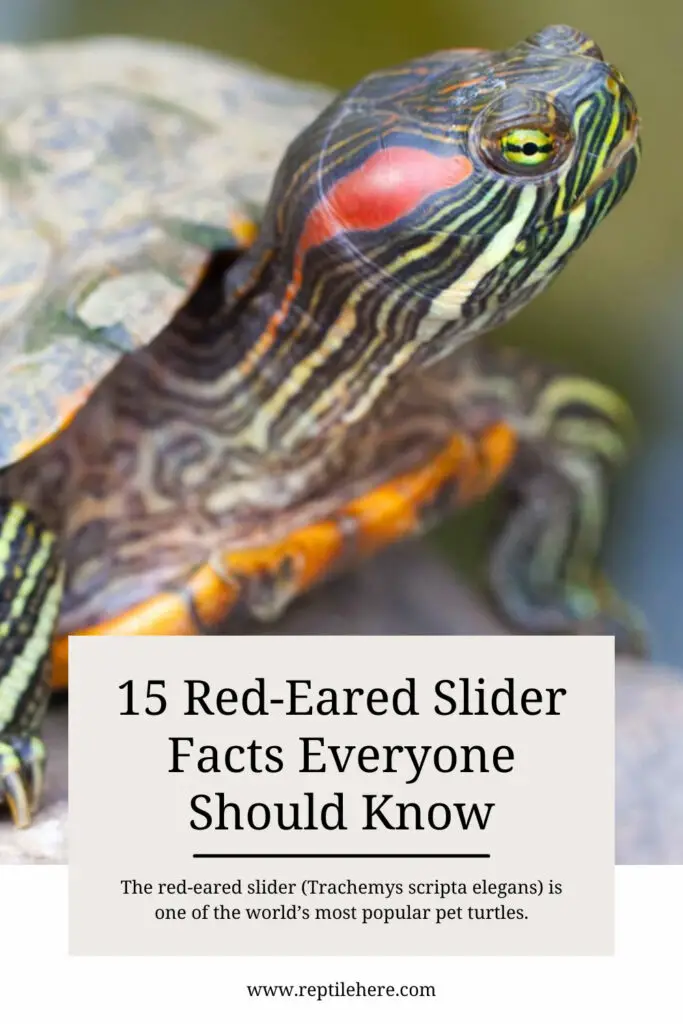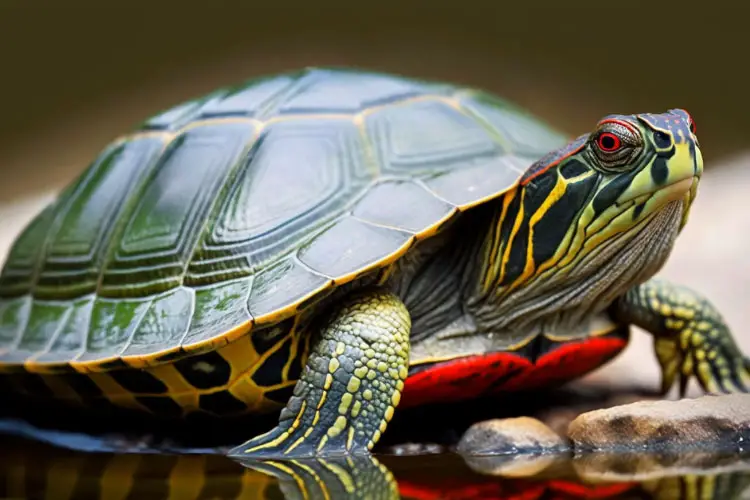15 Red-Eared Slider Facts Everyone Should Know
The red-eared slider (Trachemys scripta elegans) is one of the world’s most popular pet turtles. It is relatively cheap, has a small size, and is easy to maintain. Its appealing looks, including the characteristic red patch around its ear, further make it a favorite pet turtle for many folks in the U.S. and other parts of the globe.
In today’s post, we’ll be taking a look into the most intriguing facts every turtle owner should know about the red-eared sliders. You’ll discover interesting facts about this turtle species; from how they get their name to how they communicate, how long they can live without food—and so much more!
15 Red-Eared Slider Facts Everyone You Should Know:
Contents
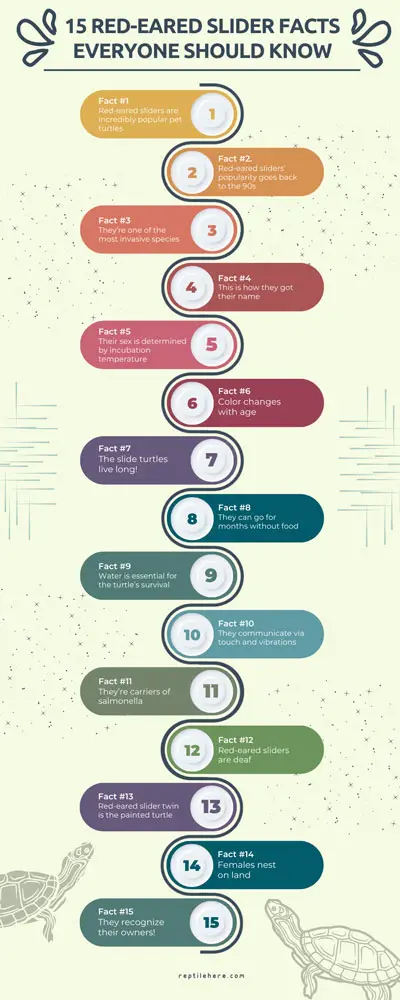
Fact #1. Red-eared sliders are incredibly popular pet turtles
Google the most popular turtle species in the USA, and the red-eared slider will appear on every list!
Many turtle enthusiasts across various states as well as all over the planet love the red-eared slider due to its attractive looks and ease of care and maintenance.
The turtle has no specialized needs and even makes a good pet for beginner turtle owners.
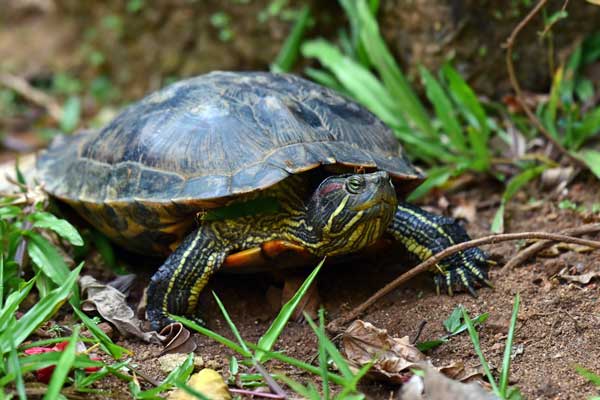
Fact #2. Red-eared sliders’ popularity goes back to the 90s
The population of this turtle species as a pet rose back in the 1990s. It especially became popular pet turtle among children following the cartoons that featured “Teenage Mutant Ninja Turtles.”
Mind you, the United States exported a whopping 52 million red-eared sliders following this show’s craze that swept the entire planet between 1989 and 1997.
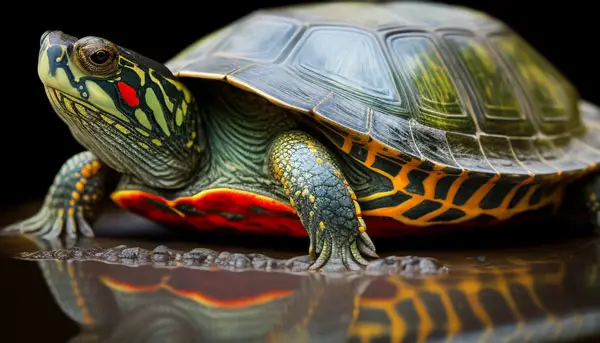
Fact #3. They’re one of the most invasive species
Red-eared sliders are named one of the world’s most invasive species. Though native to the mid-to-south regions of the southcentral USA, this species has invaded Oregon, California, New York, and many other states.
The US Geological Survey has even mapped areas where this turtle is native and where it is considered invasive.
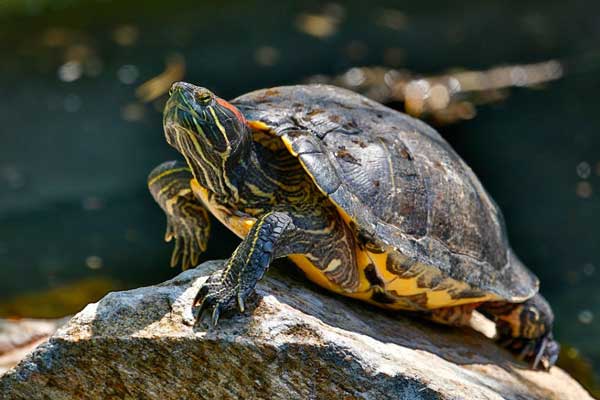
Unfortunately, this “invasiveness” nature of red-eared sliders is considered a problem as it threatens the biosecurity of the native turtle population of the various regions across the US.
For instance, in California, the slider is considered a threat to the western pond turtle, the state’s only native freshwater turtle.
Fact #4. This is how they got their name:
If you look closely at your red-eared slider pet, it has red lines running through its ears, hence the name red eared or red ear.
Besides, this turtle has an astounding ability to quickly slide off various surfaces and into the water, hence the name slider.
Red-eared sliders in the wild are especially known to swiftly slide in the water if they feel threatened by a predator when basking on a log.
Fact #5. Their sex is determined by incubation temperature
This one is quite fascinating! Whether a red-eared slider hatchling becomes a male or female is usually determined by the incubation temperature during the development process
This is due to the simple fact that these reptiles lack sex chromosomes for determining their gender.
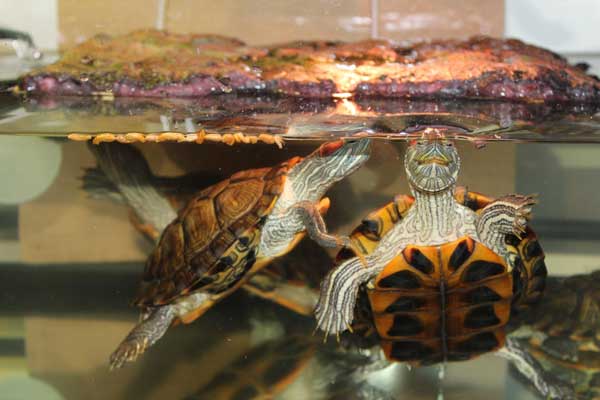
If the turtle’s eggs are incubated at temperatures between 22 and 27 degrees C, they become males. And eggs incubated at warmer temperatures become females.
Fact #6. Color changes with age
The red-eared slider colorations tend to darken as they get older. The young sliders usually have bright leaf green colorations on their shells. but as they get older, the bright colorations turn to olive green-brown.
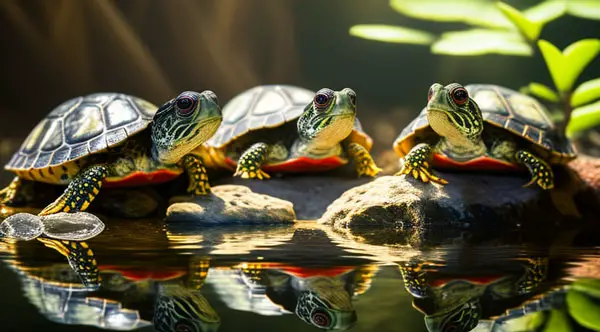
You can use this fact to easily predict the age of your red-eared slider. Also, the darkening of their shell color helps keep them camouflaged in the wild and keep their predators from easily sniffing them out and attacking them.
Fact #7. The slide turtles live long!
Your pet red-eared slider can live for as long as 20 to 30 years if given good care, including perfect living conditions, proper diet, etc.
This is something you need to keep in mind if you’re planning to get a red ear slider for a pet and be ready for the long commitment you’ll need to make to take care of your pet.
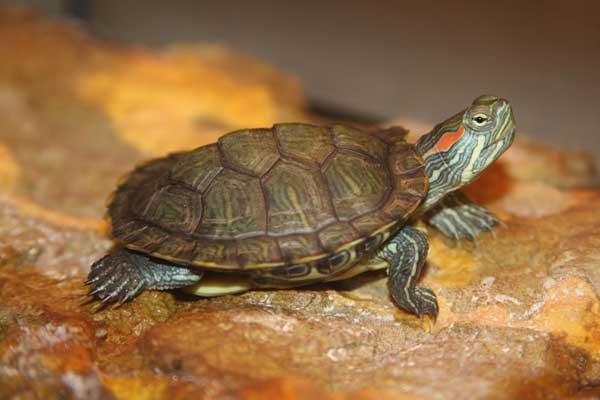
Most people are unaware of this fact and end up releasing their turtles in the wild. This is one of the reasons the turtle is considered quite invasive species.
Fact #8. They can go for months without food
Another amazing fact about these pond sliders is their ability to survive for months (up to 3 months) without eating. This makes them tough creatures that can survive in the toughest conditions.
However, the length of time, this turtle will stay without food will depend on its current living conditions such as access to clean water and a basking area.
Fact #9. Water is essential for the turtle’s survival
Turtles require water to hydrate their body. Since they lack saliva, they also require water to moisten their food for easy swallowing. They’re also generally aquatic creatures and live and defecate in the water.
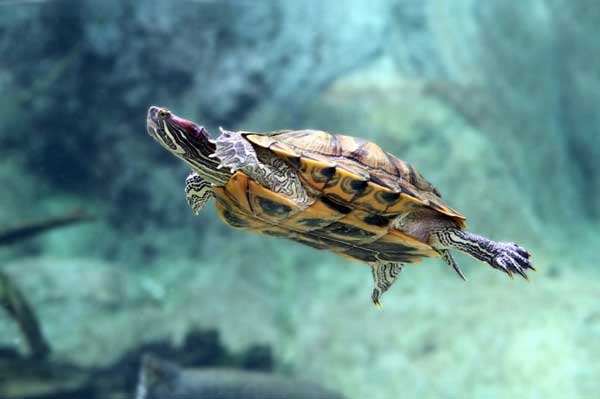
The period of time your red-eared slider can live without water will depend on many factors. An adult can stay for up to a week without water but it risks dehydration. An adult turtle in a humid environment can survive for even longer without water.
Fact #10. They communicate via touch and vibrations
The Trachemys scripta is less active during the cold winter months. You’ll find them at the bottom of the lakes when in October when the temperatures hit 10 degrees C.
It is during this phase that they start “underwater courtship” through a means of fluttering and vibration.
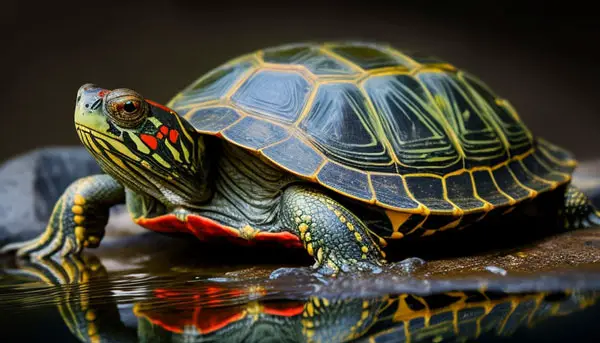
Male sliders tend to move around the females. The females will then vibrate the male’s backside using their long claws. As a result, the male starts releasing their pheromones to the females.
If the females get receptive, then something even more interesting occurs. They (females) sink to the bottom of the males occurs. While the courtship can take up to 45 minutes, mating will last for only 10 minutes.
However, if a female doesn’t become receptive, she simply turns aggressive toward the male slider turtle.
Fact #11. They’re carriers of salmonella
Yes, you heard that right! Red-eared sliders are believed to be carriers of salmonella bacteria in their droppings. You can’t easily notice if your turtle is carrying these germs as they look clean and healthy and are just carriers.
Unfortunately, these germs can easily spread to their bodies, their tank water, and anything else in the area they live in. These germs can then find their way to humans when they touch the turtle and their tank waters and make you sick!
Mind you, the United States has banned the sale of any baby red-eared sliders less than 4 inches since 1970s as they’re believed to be the key carriers of this harmful bacteria.
Fact #12. Red-eared sliders are deaf
Sliders are generally known to have poor hearing, and the red-eared sliders are no exception.
However, the turtle compensates for its hearing insensitivity by being highly sensitive to vibrations.
In addition, it has excellent smell and sight to enable it to easily detect a predator in the wild.
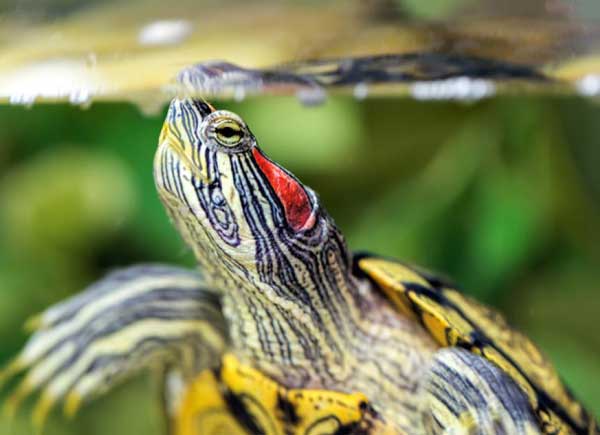
Fact #13. Red-eared slider twin is the painted turtle
If you don’t know much about red-eared sliders, you can easily confuse them with their twins—the western-painted turtle species. They look almost similar in size and shell coloration, and most people keep confusing them for one another.
Interestingly, these two turtle species happen to co-occur in the same ranges, increasing their level of confusion!
However, you can easily identify a slider by its yellow plastron with dark and blotchy markings, yellow marginal scutes, and a red ear mark running right behind its eye. However, this mark may become less visible as the slider gets older.
Fact #14. Females nest on land
Since red-eared sliders are aquatic, you may think that they nest inside the waters. But that’s not true. Since these reptiles are amniotes, the females must move to land when it gets pregnant to nest.
Its preferable nesting site should have soft soil and be sandy while having good exposure to sunlight.
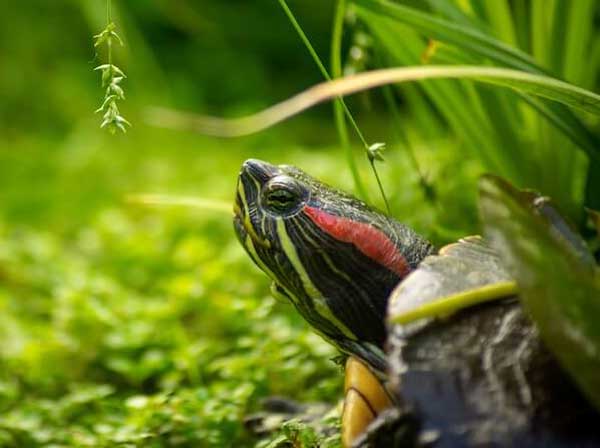
The females dig the nests using their hind legs at about 200m distance from the waters. They then around 2 to 30 eggs and bury them in the sand. The eggs take about 60 to 90 to hatch into baby sliders.
Fact #15. They recognize their owners!
Wouldn’t it feel good to know that your pet recognizes you? Well, if you own a red-eared slider and consistently take good care of it, then you’ll be amazed to know that it recognizes you.
One way it shows recognition to you as its caretaker is by coming to the side of its tank or to the top of the water to greet you when you enter the room.
Final Thoughts
Red-eared sliders remain one of the most popular pet turtle species not only in the US but also across the globe. They’re easy to care for and maintain. They have a small size and their eye-pleasing colorations make them a favorite for many turtle enthusiasts.
We hope you’ve enjoyed this list of some fascinating facts about red-eared sliders, including how they became popular, the origin of their name, lifespan, communication techniques, how their sex is determined, and other interesting facts.
